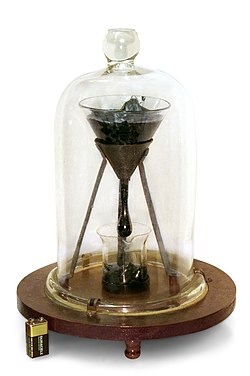
Pitch is a viscoelastic polymer which can be natural or manufactured, derived from petroleum, coal tar, [1] [2] or plants. Pitch produced from petroleum may be called bitumen or asphalt, while plant-derived pitch, a resin, is known as rosin in its solid form. Tar is sometimes used interchangeably with pitch, but generally refers to a more liquid substance derived from coal production, including coal tar, or from plants, as in pine tar. [3]

